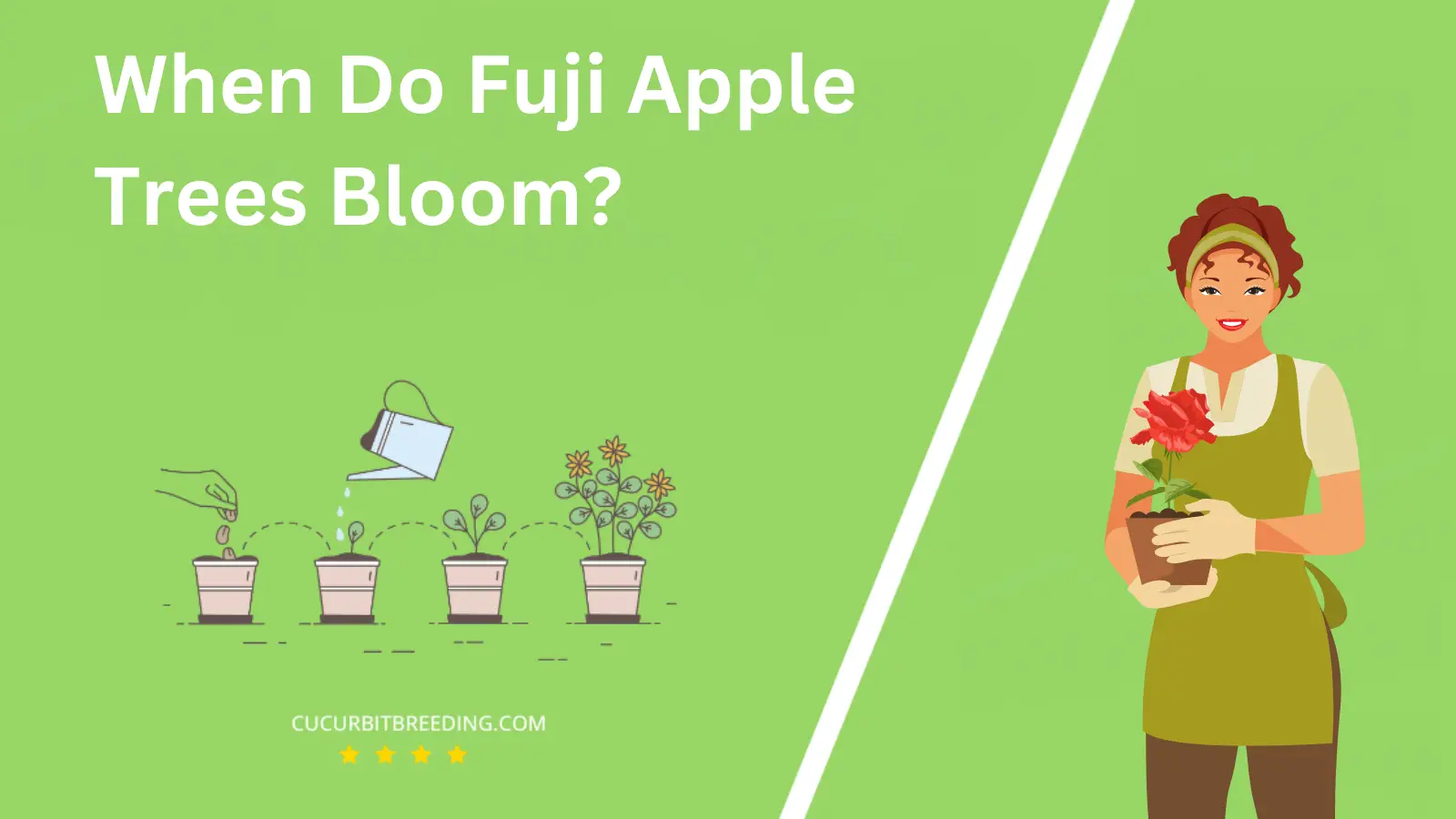
Wondering when do Fuji apple trees bloom? You’re not alone. This question intrigues many gardening enthusiasts and apple lovers. These fruit trees, known for their crisp and sweet apples, follow a specific blooming cycle.
Understanding this cycle is key to ensuring a bountiful apple harvest. Let’s delve into the fascinating world of Fuji apple trees and their blooming patterns.
When Do Fuji Apple Trees Bloom?
Fuji apple trees typically bloom in the spring, usually between April and May. This is when they exhibit their beautiful white flowers before producing fruit. However, the exact timing of the bloom can vary based on the location and specific climate conditions.
| Stage | Description |
|---|---|
| Germination | Spring (March-April) |
| Growth | Spring and summer (March to August) |
| Blooming | Spring (April – May) |
| Dormancy | Winter (December-February) |
How Long Do Fuji Apple Trees Bloom?
Fuji Apple Trees typically bloom in the spring, around late April to early May. The blooming period generally lasts for about 1 to 2 weeks, depending on the weather conditions. Cold and frost can potentially shorten this period, while optimal weather conditions can extend it.
How Light Affects Fuji Apple Trees Blooms?
Light intensity greatly influences the bloom of Fuji apple trees. Optimal sunlight exposure is crucial for the triggering of chemical reactions that induce blooming and fruiting. Ideally, Fuji apple trees should have six to eight hours of sunlight daily for a better harvest. Lack of adequate light may result in poor flowering, causing a significant decrease in apple production.
Furthermore, sunlight is essential for the process of photosynthesis, whereby the plant converts light, water, and carbon dioxide into glucose for growth and fruit production. Thus, ensuring ample light exposure is fundamental for the healthy growth and blooming of Fuji apple trees. However, too much of direct sunlight could cause harm to the tree causing sunburn to apples and leaves. Therefore, the amount of light exposure needs to be well balanced.
Will Fuji Apple Trees Bloom the First Year You Plant Them?
No, Fuji apple trees will not bloom in the first year they are planted. Apple trees, including the Fuji variety, typically take between 2 to 5 years to mature enough to produce blossoms and subsequently, fruit. This timeline depends on the specific conditions of their growing environment, such as soil quality, sunlight, and proper care.
Will Fuji Apple Trees Bloom Every Year?
Yes, Fuji apple trees will bloom every year. This is because they are perennial plants, which means they have a life cycle that lasts for more than two years. During their annual cycle, they will typically bloom in the spring, set fruit in the summer, and harvest in the fall. However, it’s crucial to note that certain conditions such as the tree’s age, health, and environmental factors can influence the blooming process.

Should I Deadhead Fuji Apple Trees Blooms?
No, you should not deadhead Fuji apple tree blooms. Deadheading, or the removal of dead or faded flowers, is not typically necessary for fruit trees. Instead, these trees naturally shed their blossoms after pollination. It’s also important to note that the blooms are where the apples come from, so removing them would lead to less fruit production.
Top Reasons Mature Fuji Apple Trees May Stop Flowering

Mature Fuji apple trees may stop flowering due to several reasons. Insufficient sunlight is one of the main reasons; apple trees need full sun to produce the energy necessary for flowering.
Inadequate or imbalanced fertilization can also hinder flowering. Too much nitrogen promotes leaf growth at the expense of flowers and fruit, while insufficient phosphorus and potassium can also limit flowering.
Improper pruning is another common issue. Pruning stimulates growth, but excessive or incorrect pruning can reduce flowering. Additionally, stress from pests, disease, or environmental conditions such as drought or extreme temperatures can prevent a tree from flowering.
Lastly, biennial bearing, a natural tendency of some apple trees to alternate between years of heavy fruiting and light or no fruiting, may be causing the lack of flowers.